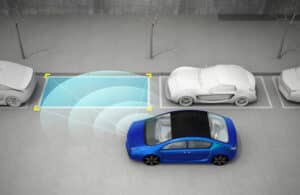Thermal Imaging Can Improve Autonomous Driving
Three major accidents in 2018 have led to a setback for Thermal Imaging Can Improve Autonomous Driving. Thermal imaging, however, can improve autonomous driving. Thermal imaging (also known as infrared) holds great promise in reducing the risk of certain types of accidents.

Thermal Imaging Can Improve Autonomous Driving
Thermal Imaging Can Improve Autonomous Driving is not a science fiction concept anymore. With affordable sensors and improved computing power, it’s no longer a fantasy. This is a rapidly-developing field that has seen exponential growth. By 2030, it is estimated that fully autonomous vehicles will become commonplace on the roads. This disruptive technology is going to have a long-lasting impact on our economy and lifestyle.
We must first overcome a few hurdles in order to realize the potential of autonomous driving and how it will transform our roads. The vehicle must be able to detect its environment fully. Sensor fusion is required to automatically combine multiple imaging modes. Radar, LIDAR and ultrasonic sensors are currently used in the design of autonomous vehicles. These sensors should allow for full environmental detection. As is so common, the theory and the practice are often different, as was the case with the accident last year.
Two Tesla cars were in autopilot mode both in January and March. The first struck a stationary truck and the second a concrete lane separator, resulting in the death of its driver. In March, an Uber Volvo equipped with CCD, LIDAR and radar struck a pedestrian who was crossing the road. The collision was fatal because of the limited visibility at night and the failure of the radar and LIDAR system to detect the pedestrian crossing the road. If this system had been equipped with a thermal imaging camera, it would have improved the detection rate and saved the pedestrian’s lives.
Our engineers and manufacturers are experts in creating precision lenses for thermal cameras. Our engineers and manufacturers can produce the high-quality lenses that the industry relies on.
Infrared can be leveraged in several ways to improve existing autonomous sensory systems:
- Warm-bodied objects exhibit high contrast in cold environments, making them easily identifiable
- There is no dependence on visible light with better performance during nighttime applications
- Infrared provides more detail on objects than LIDAR and radar
- There are no blooming effects from lights in the camera’s field of view (FOV)
- There are minimal effects on the image from shadows
This Thermal Imaging Can Improve Autonomous Driving technology does not replace the traditional cameras, LIDAR or radar, which are already on the majority of self-driving vehicles and do the mapping in three dimensions. It’s more of a passive layer that supplements the recognition software.
Thermal imaging provides additional information for existing sensor systems in autonomous vehicles. Thermal information is needed to classify and detect a target, or to confirm that a classification already assigned by another sensor will likely be accurate. By integrating IR imaging into autonomous driving, the environmental information can be increased and accidents like pedestrian deaths can be avoided.




